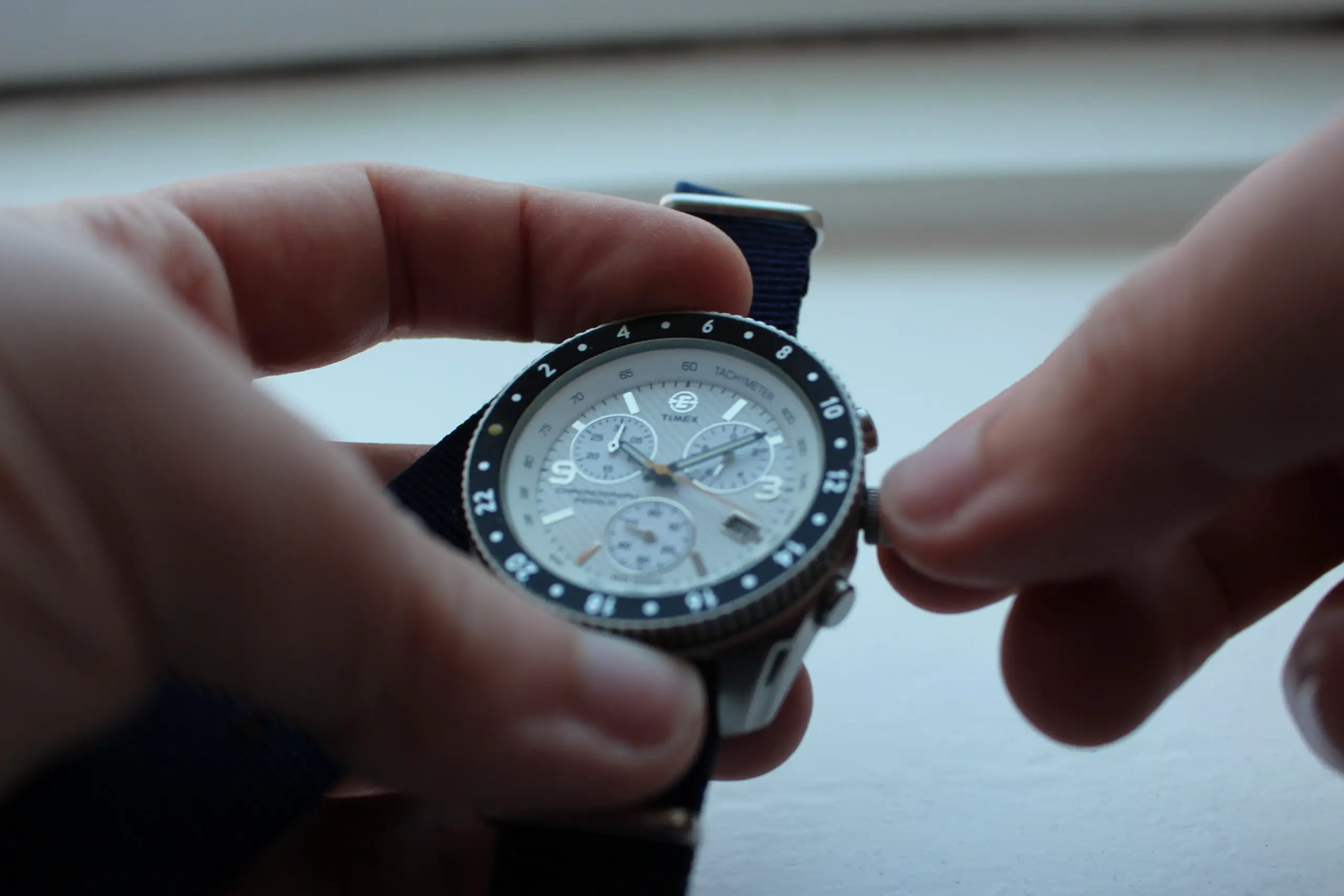So what is the rotating bezel on a watch for anyway? A rotating bezel is a feature on a watch that allows for an alternate method of tracking time. They are most commonly used in diver’s watches to track diving time. There are other types of watches that use rotating bezels, however. Exactly how you would use the rotating bezel for tracking time will depend on what type of watch you are using.
Types Of Rotating Bezels
For the most part, rotating bezels come in 2 types. A rotating bezel can be either unidirectional, or bidirectional. Unidirectional rotating bezels are found on diving watches, and can only be rotated counter-clockwise. Bidirectional rotating bezels can be rotated either clockwise, or counter-clockwise.
In addition to diver’s watches, you can also commonly find a rotating bezel on compass watches. Unlike diving watches, in which the rotating bezel is unidirectional; on compass watches, the rotating bezel is bidirectional. The bezel on compass watches is used to aid in navigation.
There is, however, a third type of rotating bezel known as “ring command”. This type of rotating bezel will only be found on Rolex watches. Ring command bezels are linked to the inner workings of the watch itself. This allows for the user to adjust the watch settings by turning the bezel.
How Does A Rotating Bezel Work?
Now that you know what the rotating bezel on a watch is for, the next question would be, “How does a rotating bezel work?”
A rotating bezel can be either internal or external. The vast majority of rotating bezels on watches are going to be external. External bezels are located on the outside of the watch, and are turned manually with your hand. Internal bezels, are located within the watch case, and are manipulated by use of the crown, or another button on the watch.
In the next part, we will cover how to use a rotating bezel on both diver’s watches, and compass watches. We’ll start with the most commonly used type, which is diver’s watches.
How To Use A Diving Watch Bezel

As a diver, keeping track of your diving time is extremely important for a couple of reasons. First, you have a limited amount of air in your oxygen tank, so you need to be aware of approximately how much air you have left in your tank. Secondly, you are going to need about 15 minutes to safely ascend to the surface in order to properly decompress from the pressure put on the body from a deep dive.
A diver must ascend slowly, by making decompression stops, in order to to decompress from the buildup of nitrogen within the body. Failure to do so may result in decompression sickness. That is why it is so important to know how to use a diving watch properly. This is where the unidirectional rotating bezel of a diving watch comes into play.
Setting The Diving Watch
A diver’s watch is unidirectional for a reason. To set a diver’s watch, you would rotate the bezel counter-clockwise until the arrow on the bezel lines up with the minute hand. Now you can see how many minutes you have been underwater, by looking at where the minute hand is pointing to on the bezel.
The reason that the bezel only rotates one way, is so that if you accidentally move it, it will show that you have spent more time underwater, rather than less time. This will ensure that you will never start ascending later than you should. Worse case scenario is that you start your ascent earlier than planned!
So when you have set the bezel and decided how much time your are going to spend underwater (allocating an extra 15 minutes for the ascent), once you hit that time, you can now once again line the arrow on the bezel with the minute hand. Now you can use the bezel to time your 15 minutes to safely ascend back to the surface.
How To Use A Compass Watch Bezel

In this section, you will learn how to use a compass watch. Before you even start using the compass bezel, make sure that your compass watch is set to the proper time. Also, disregard daylight savings time. So if it is daylight savings time, then be sure to set the watch one hour back.
Northern Hemisphere
The first thing that you need to do is align the hour hand with the sun. Assuming you live in the northern hemisphere, you would move the compass bezel until the “South” indicator is halfway between the hour hand and noon. That’s all there is too it! Now the compass bezel is properly oriented so that north, south, east, and west, directions are accurately displayed.
Keep in mind, that you will need to repeat this process every hour in order to account for the sun’s changing positions in the sky.
Southern Hemisphere
If you live in the southern hemisphere, then the method will be a little bit different. In order to use a compass watch in the southern hemisphere, you would first point the 12 marker so that it aligns with the sun. Next, rotate the bezel until the “North” indicator is is right in the middle between the 12 marker and the hour hand. And now your directions will be properly oriented!
How To Use A Ring Command Bezel
The ring command bezel is specific to certain Rolex watches. It’s actually quite simple to use. The ring command function allows you to adjust the settings of the watch using a combination of the bezel and crown.
To use the ring command bezel, you first unscrew the crown, and then pull it all the way out. The bezel activates 4 different settings depending on what position it is in. Once the crown is out, you simply have to rotate the crown to activate each setting. Then you can use the crown to adjust that setting.
The starting position of the bezel is its neutral position. Rotating the bezel 1 click to the left activates the date window. 2 clicks to the left allows you to set local time. 3 clicks allows you to set the home time.
Final Thoughts
So by now you should have a better understanding of how rotating bezels work. A lot of people only think about diving watches when referring to rotating bezels, but as you have seen, other types of watches use rotating bezels as well. If you enjoyed this article, then feel free to check out some of our other info articles!


